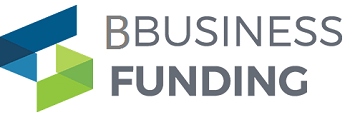It’s used to cover things like payroll, inventory, and other operating expenses. Small businesses often have a hard time qualifying for traditional loans, so working capital loans can be a helpful alternative. However, they typically come with higher interest rates and shorter repayment terms. In this blog post, we’ll discuss the definition of a working capital loan, its uses in business, and the different types of working capital loans available.
What is a Working Capital Loan?
A working capital loan is a type of business loan that helps a business finance its daily operations. The loan is used to cover expenses such as inventory, employee salaries, and other operating costs.
There are two main types of working capital loans: short-term and long-term. Short-term loans are typically repaid within one year, while long-term loans have terms of two years or more.
A secured loan is backed by collateral, such as a company’s accounts receivable or inventory.
Working capital loans are an important source of financing for small businesses. They can help businesses tide over during periods of slow sales or unexpected expenses.
How can businesses use working capital loans?
There are several ways businesses can use working capital loans. One common way is to use the loan to cover operational expenses such as rent, utilities, payroll, and inventory. This can help businesses keep their doors open and avoid having to lay off employees or shut down completely.
Another way businesses can use working capital loans is to invest in new equipment or machinery. This can help businesses increase production and efficiency, which can lead to increased profits. Working capital loans can also be used to finance marketing campaigns or other growth initiatives.
Ultimately, the best way to use a working capital loan depends on the specific needs of the business. However, these loans can be incredibly helpful in ensuring that businesses have the funds they need to stay afloat and grow.
Pros and Cons of Working Capital Loans
Working capital loans are a type of financing that can provide companies with the funds they need to cover their short-term operational expenses. These loans are typically used to finance inventory, accounts receivable, and other types of business activities.
There are several benefits to using working capital loans, including:
1. They can help businesses keep their doors open during tough economic times.
2. They can provide companies with the funds they need to take advantage of opportunities that arise unexpectedly.
3. They can help businesses manage their cash flow more effectively.
However, there are also some drawbacks to using working capital loans, including:
1. They can be expensive, as they often come with high interest rates.
2. They can be difficult to obtain, as many lenders are hesitant to give them out due to the high risk involved.
What are the different types of working capital loans?
Small businesses have a number of options when it comes to securing working capital financing. The type of loan that is best for your business will depend on a number of factors, including the size and financial health of your business, the amount of funding you need, and your repayment ability.
The most common types of working capital loans are:
1. Line of Credit: A line of credit is a flexible financing option that can be used for a variety of purposes, including inventory financing, accounts receivable financing, and short-term business expenses. Lines of credit typically have lower interest rates than other types of loans and can be renewed or extended on an as-needed basis.
2. Business Term Loan: A term loan is a lump sum of cash that is repaid over a fixed period of time, typically 1-5 years. Term loans usually have fixed interest rates and can be used for a variety of purposes, including equipment financing, expansion financing, and long-term working capital needs.
3. SBA Loan: An SBA loan is a government-backed loan program available to small businesses. SBA loans typically have low interest rates and flexible repayment terms and can be used for a variety of purposes, including start-up financing, equipment financing, and real estate purchase
Advantages and disadvantages of working capital loans
There are many different types of working capital loans, each with its own set of advantages and disadvantages. The most common type of loan is the term loan, which offers a fixed interest rate and repayment schedule. However, these loans can be difficult to qualify for if you have bad credit. Another option is a line of credit, which can be used as needed and typically has a lower interest rate than a term loan. But lines of credit often require collateral, such as a business vehicle or equipment.
Invoice financing is another type of working capital loan that can be beneficial for businesses with a lot of invoices outstanding. With this type of loan, you use your invoices as collateral to secure funding. This can help you free up cash flow so you can invest in other areas of your business. However, it’s important to keep up with your repayments, as missing payments could lead to your invoices being sold to a third-party collections agency.
Asset-based lending is another option for businesses that need working capital. With this type of loan, you use your assets as collateral to secure funding. This can be a good option if you have high-value assets but bad credit, as it can be easier to qualify for than other types of loans. However, if you default on the loan, you could lose your assets.
Choosing the right working capital loan for your business depends on a variety of factors, including your credit history,
How to get a working capital loan
A working capital loan can provide your business with the financial resources it needs to cover day-to-day expenses and maintain operations. This type of loan is typically used to cover short-term costs, such as inventory or Accounts Receivable (A/R) financing.
There are a number of ways to qualify for a working capital loan. The most common is through collateral, such as business equipment or real estate. Other options include personal guarantees, business financials, and credit history.
Once you’ve been approved for a working capital loan, it’s important to use the funds wisely. Make sure you only borrow what you need and that you have a plan in place for how the funds will be used. repayment schedule that works for your business.
Conclusion
A working capital loan is a type of loan that helps businesses with their everyday expenses. This type of financing can be used for a variety of purposes, such as inventory, payroll, and marketing. There are several different types of working capital loans, each with its own set of benefits and drawbacks. As you consider whether or not a working capital loan is right for your business, be sure to consult with a financial advisor to get the most accurate advice.

